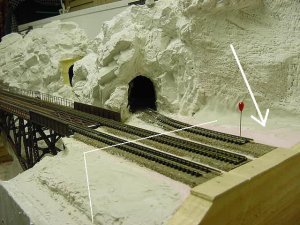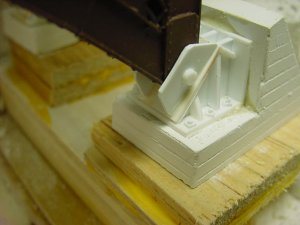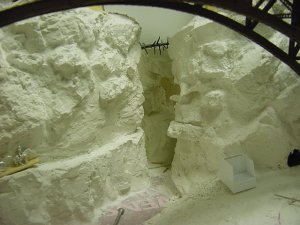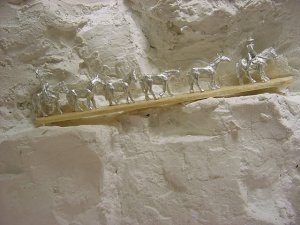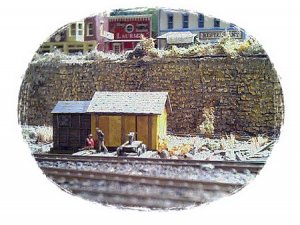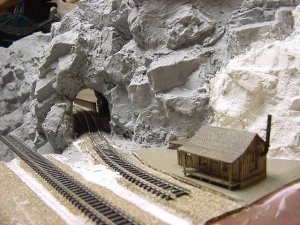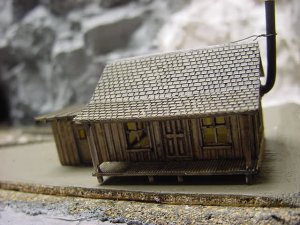It looks like very fine modelling is going on . With respect to structures associated with MoW at bridge sites, they would be uncommon in North America. Generally, track gangs through the 1960s had sections of a Division to cover. In remote areas the ralroad would provide a house for the section foreman's family , and a bunk house for the section workers. In some case they also had to provide houses for sectionmens families, if the area was such, that they could not get crews without them
If you are interested, the concept of a regularly organized patrolling and repairing staff for rights of way was taken from the system invented by Napoleon Bonaparte to maintain the road system he developped. His system was maintained by all the governments thereafter , resulting in France having the only all weather system of high roads prior to the automobile age.
Tommies, Fritz , Anzacs. American Doughboys, and all other servicemen that showed up from elsewhere , to fight on the Western Front in the Great War, were very impressed with these highways as nothing like them existed , on such a scale, wherever they came from. Their maintenance structure had used retired soldiers. An officer had a large section of right of way and a Sergeant got a ten KM section. The sergeant had five retired poilus to take care of his stretch. They lived in low cost govt. paid housing at 2km intervals along the road , and served that by inspecting it daily. The six getting together on a single day to perform multii-man tasks somewhere along that stretch of road. Larger programs could be directed by the officer requiring several crews for something on a monthly basis. Major construction or reconstructions of bridges, etc- might employ staff from central road supply depots run by retired General officers and also outside contractors (veterans were favored for employment , regardless of whether they were retired 'Lifers' or not). Other government agencies got into servicing this system. The prisons provided crushed stone (the old fashioned way), military cadets got to work on engineering projects both as laborers and as engineers as upper classmen, etc. Of course the usual tactical military teaching figured in the St.Cyr part of this experience.
When the railroads came along , the only large scale organized operation was the military. So they copied them . Since the Napoleonic Roads were the closest thing to an ideal system of ground transportation, they copied it ,where possible . to apply it on railroads . The line organization used to run railroads, and references to sections and divisions are all straight from the military.
The Canals, which antedated railroads in Europe, had also borrowed from military organizations. In North America , canals were not colonial enterprises , and little but removing rocks from rivers was done until the second decade of the 19th century. So they were more coincident enterprises than predecessors, and they also had looked to the military for operational and maintenance guidons.
Sometimes section houses were asssociated with bridges, as in the famous one on the Maine Centra's Mountain Divisionl near the Willey and Frankenstein Brook's viaducts. That was a function of the need to put a section house up high near the summit , and at the same time keep it out of the way of landslides. Their were also sheds or sometimes rooms hollowed out of rocks at tunnels to store signalmans spares ,and track hardware since they were critical to safe train operation and often took a beating from ice and water in these locations.
In some countries, notably the former Soviet Union and parts of its satellites, guard shacks were placed at every major bridge or tunnel to protect the soldiers doing duty from the elements. Sometimes at isolated sites there were sleeping and cooking bunkers provided for these troops.
In the case of North America , except for the odd uprising or revolution here or there , only Mexico had periods that covered decades where guardposts were manned at critical railroad civil engineering sites. Some of those are around today serving as railroad storage/supply shacks, or the homes of civilians. Storage shacks or facilities have been cast into reinforced concrete footings for highway departments , and probably railroads as well . There were/are some dugout storage places drilled out of rock that, I believe , served as powder magazines during the blasting of the ledges for ROW along the Thompson and Frazier Rivers.
These are all unusual cases,and mainly, the faciiities for the section gangs use ,were sited based upon distance factors and topography ; rather than the presence of major civil engineering artifacts.
Good-Luck, PJB


